Warren Distinguished Lecture Series

The Warren Distinguished Lecture Series is made possible by a generous, renewing gift by Alice Warren Gaarden in 1961. Since 1989, we have been bringing in accomplished researchers and speakers from around the world to share their work with students, faculty, and friends of CEGE.
NOTE: The series will resume after a summer break. Please review our recordings of past sessions linked below!
Upcoming Events
The series will resume after a summer break. Please review our recordings of past sessions linked below!
There are no upcoming events matching your criteria.
Past Warren Lectures
Ultrasonic Degradation of Natural Organic Matters and Anthropogenic Contaminants
Friday, Dec. 11, 2015, 10:10 a.m. through Friday, Dec. 11, 2015, 11:15 a.m.
George J. Schroepfer Conference Theater, 210 Civil Engineering Building

Dong Chen
Engineering, Indiana University-Purdue University Fort Wayne
ABSTRACT: Powerful ultrasound is an attractive technology used in environmental remediation to degrade recalcitrant anthropogenic contaminants. However, natural organic matters (NOMs), ubiquitously present in surface and ground waters participate and affect the ultrasonic degradation process. The changes to NOM properties suggest that ultrasound may significantly affect NOM-pollutant interactions (e.g., facilitate desorption of hydrophobic organics from NOMs or promote complexation between metallic cations and NOMs). In addition, several examples are presented for ultrasonic degradation of emerging anthropogenic contaminants.
Insights into Environmental NanoScience using QCM-D
Friday, Dec. 4, 2015, 10:10 a.m. through Friday, Dec. 4, 2015, 11:15 a.m.
George J. Schroepfer Conference Theater, 210 Civil Engineering Building
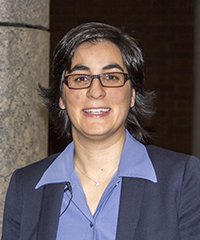
Nathalie Tufenkji
Chemical Engineering, McGill University
ABSTRACT: The quartz crystal microbalance with dissipation monitoring (QCM-D) is a useful technique for evaluating the deposition behavior of engineered nanoparticles (ENPs) on model environmental surfaces such as SiO2, Fe2O3 and Al2O3. Although QCM-D has been used to gain insight into the potential transport behavior of different ENPs in natural aquatic environments, a number of caveats exist in the interpretation of QCM-D measurements. Tufenkji's work demonstrates some of the potential applications and limitations of QCM-D in environmental nanoscience.
Advances in the Material Science of Concrete
Friday, Nov. 20, 2015, 10:10 a.m. through Friday, Nov. 20, 2015, 11:15 a.m.
George J. Schroepfer Conference Theater, 210 Civil Engineering Building

Surendra Shah
Civil and Environmental Engineering, Northwestern University
ABSTRACT: Considerable progress has been made in understanding and improving the performance of concrete. Five decades ago the commonly used concrete had a compressive strength of 20 MPa. Today we talk about concrete with a compressive strength of 300 MPa. In addition to high strength and ultra-high strength concrete, we have developed high performance concrete for enhanced durability. Recently the American Concrete Institute has established new committees on nanotechnology as well as ultra-high strength concretes. Professor Shah has been extensively involved in these developments. He will discuss several multi-disciplinary projects that have led to advances we have made in strength, ductility, fracture properties, fiber reinforced concrete, ultra-high performance concrete, self-consolidating concrete, rheology, and sustainability.
Air Pollutant Exposure: Leveraging High Time Resolution Data to Understand Pollutant Source Impacts
Friday, Nov. 13, 2015, 10:10 a.m. through Friday, Nov. 13, 2015, 11:15 a.m.
George J. Schroepfer Conference Theater, 210 Civil Engineering Building
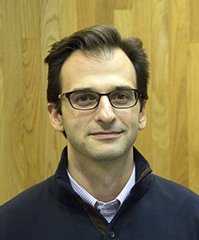
Albert A. Presto
Mechanical Engineering, Carnegie Mellon University
ABSTRACT: Temporally and spatially resolved measurements and models of air pollutant concentrations are needed to advance exposure assessment, to investigate pollutant hotspots, and to elucidate relationships between specific pollutants (e.g., PM components) and human health. Mobile sampling with high time resolution data collection (~1 sec - 1 min) can be used to build pollutant spatial maps with high resolution (10s-100s of meters) and to investigate impacts of specific emissions sources. This seminar describes challenges associated with using mobile sampling or other short-duration sampling techniques for generating pollutant spatial maps. A recent sampling campaign in Pittsburgh, Pennsylvania, a city with substantial traffic and industrial emissions, is presented as a case study of data collection and spatial model development. Spatially resolved pollutant maps are applied to investigate environmental justice and human health impacts of pollutant exposures. Source apportionment techniques are used to resolve impacts resulting from specific emissions sources (e.g., traffic versus industrial emissions), which can in turn inform future policy directions.
Variational Principle for Probabilistic Measure in Theory of Materials with Random Microstructures and Beyond
Friday, Nov. 6, 2015, 10:10 a.m. through Friday, Nov. 6, 2015, 11:15 a.m.
George J. Schroepfer Conference Theater, 210 Civil Engineering Building

Victor Berdichevsky
Mechanical Engineering, Wayne State University
ABSTRACT: Materials with random microstructures can be adequately described only in probabilistic terms. One problem that arises is how to find probabilistic characteristics of local fields (stresses, currents, etc.) when probability distributions of material characteristics are known? This is one of the two topics covered inthis presentation. The second topic is closely related to the first; it concerns the thermodynamics of microstructure evolution. Berdichevsky argues that classical thermodynamics is not sufficient for macroscopic description of solids, and that there is one more law of thermodynamics which controls the evolution of microstructures.
Pesticide Processing and Organic Matter Composition in Prairie Pothole Wetlands
Friday, Oct. 30, 2015, 10:10 a.m. through Friday, Oct. 30, 2015, 10:10 a.m.
George J. Schroepfer Conference Theater, 210 Civil Engineering Building
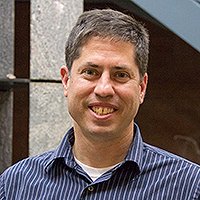
William Arnold
Civil, Environmental, and Geo- Engineering, University of Minnesota
ABSTRACT: The prairie pothole region in the upper Midwest United States is an ecosystem threatened by agricultural activities, energy extraction, and climate change. The prairie pothole wetlands present both a threat to native species and an opportunity to manage pesticide laden runoff. Arnold will explore the reactivity of pesticides in the sediment and the water column in wetlands.
Heating and Weakening of Shear Zones in Landslide and Earthquake Mechanics
Friday, Oct. 23, 2015, 10:10 a.m. through Friday, Oct. 23, 2015, 11:15 a.m.
George J. Schroepfer Conference Theater, 210 Civil Engineering Building
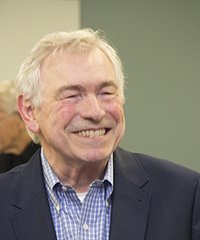
James Rice
Earth and Planetary Sciences, Harvard University
ABSTRACT: Field and borehole observations of active earthquake fault zones show that shear is often highly localized to principal deforming zones of order 10s of microns to a few mm wide. Landslides in relatively homogeneous soils, especially clays, or in layered strata can likewise exhibit extremely narrow shear zones. Those two domains of study, landslide and earthquake mechanics, reached relative maturity with, it seems, nearly total ignorance of researchers in one field about developments in the other. Ioannis Vardoulakis was a great exception, avidly advancing the science of both fields. This lecture follows Vardoulakis to explain narrow shear zone development as a thermo-hydro-mechanical process in wet granular media.
Measurement and Modeling of Real-World Onroad Vehicle Activity and Emissions
Friday, Oct. 16, 2015, 10:10 a.m. through Friday, Oct. 16, 2015, 11:15 a.m.
George J. Schroepfer Conference Theater, 210 Civil Engineering Building

Chris Frey
North Carolina State University
ABSTRACT: Onroad and nonroad vehicles contribute significantly to emissions of pollutants such as NOx, CO, hydrocarbons, and particulate matter, and to formation of secondary pollutants such as ozone. Portable emissions measurement systems (PEMS) are used to observe in-use vehicle tailpipe emissions, leading to duty cycles and associated energy usage and emissions rates that represent real-world conditions. PEMS utilization includes field study design, data collection, quality assurance, and data analysis. Over the last dozen years, field data have been collected for a wide variety of vehicles. These data have been used to support improved emission inventories, evaluate the impact of traffic control and transportation infrastructure, develop models that link transportation activity and emissions, empirically evaluate the efficacy of vehicle regulations, and inform decisions regarding fuel choices. Frey discusses the implications of data collection and modeling for improved decision making regarding management of vehicle emissions.
Lattice Models for Fracture and Transport
Friday, Oct. 9, 2015, 10:10 a.m. through Friday, Oct. 9, 2015, 11:15 a.m.
George J. Schroepfer Conference Theater, 210 Civil Engineering Building
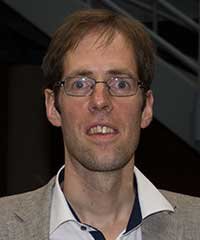
Peter Grassl
Civil Engineering, University of Glasgow
ABSTRACT: The response of geomaterials is governed by complex fracture and mass transport processes. The mathematical modelling and computer simulation of these processes using continuum approaches can be challenging due to the heterogeneity of the materials and the discontinuous nature of the processes. This presentation discusses recent progress in developing lattice models for fracture and mass transport and their application to the analysis of fracture process zones, fluid pressure induced fracture and microcracking induced increase of permeability.
Simulation of Ductile Fracture Initiation in Steel Structures with Applications to Seismic Design
Friday, Oct. 2, 2015, 10:10 a.m. through Friday, Oct. 2, 2015, 11:15 a.m.
George J. Schroepfer Conference Theater, 210 Civil Engineering Building
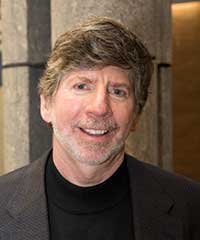
Special Warren Lecture in Honor of Robert Dexter
Gregory G. Deierlein
Civil and Environmental Engineering, Stanford University
ABSTRACT: This lecture summarizes recent research on continuum-based fracture mechanics, where cyclic void growth models are used to assess fracture initiation under large scale cyclic yielding. The models are implemented through finite element analyses and validated through a series of tests on notched axial bars, compact tension specimens, and large scale steel subassembly tests of braces and column base connections. Practical engineering applications are described.